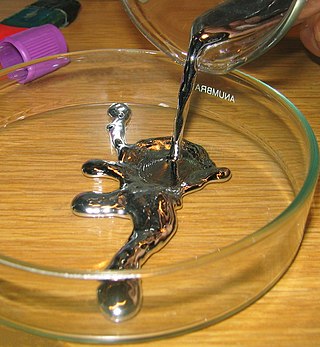
The Kyoto Protocol (Japanese: 京都議定書, Hepburn: Kyōto Giteisho) was an international treaty which extended the 1992 United Nations Framework Convention on Climate Change (UNFCCC) that commits state parties to reduce greenhouse gas emissions, based on the scientific consensus that global warming is occurring and that human-made CO2 emissions are driving it. The Kyoto Protocol was adopted in Kyoto, Japan, on 11 December 1997 and entered into force on 16 February 2005. There were 192 parties (Canada withdrew from the protocol, effective December 2012) to the Protocol in 2020.

The Montreal Protocol on Substances That Deplete the Ozone Layer is an international treaty designed to protect the ozone layer by phasing out the production of numerous substances that are responsible for ozone depletion. It was agreed on 16 September 1987, and entered into force on 1 January 1989. Since then, it has undergone nine revisions, in 1990 (London), 1991 (Nairobi), 1992 (Copenhagen), 1993 (Bangkok), 1995 (Vienna), 1997 (Montreal), 1998 (Australia), 1999 (Beijing) and 2016 (Kigali) As a result of the international agreement, the ozone hole in Antarctica is slowly recovering. Climate projections indicate that the ozone layer will return to 1980 levels between 2040 and 2066. Due to its widespread adoption and implementation, it has been hailed as an example of successful international co-operation. Former UN Secretary-General Kofi Annan stated that "perhaps the single most successful international agreement to date has been the Montreal Protocol". In comparison, effective burden-sharing and solution proposals mitigating regional conflicts of interest have been among the success factors for the ozone depletion challenge, where global regulation based on the Kyoto Protocol has failed to do so. In this case of the ozone depletion challenge, there was global regulation already being installed before a scientific consensus was established. Also, overall public opinion was convinced of possible imminent risks.
The United Nations Framework Convention on Climate Change (UNFCCC) is the UN process for negotiating an agreement to limit dangerous climate change. It is an international treaty among countries to combat "dangerous human interference with the climate system". The main way to do this is limiting the increase in greenhouse gases in the atmosphere. It was signed in 1992 by 154 states at the United Nations Conference on Environment and Development (UNCED), informally known as the Earth Summit, held in Rio de Janeiro. The treaty entered into force on 21 March 1994. "UNFCCC" is also the name of the Secretariat charged with supporting the operation of the convention, with offices on the UN Campus in Bonn, Germany.

The United Nations Environment Programme (UNEP) is responsible for coordinating responses to environmental issues within the United Nations system. It was established by Maurice Strong, its first director, after the United Nations Conference on the Human Environment in Stockholm in June 1972. Its mandate is to provide leadership, deliver science and develop solutions on a wide range of issues, including climate change, the management of marine and terrestrial ecosystems, and green economic development. The organization also develops international environmental agreements; publishes and promotes environmental science and helps national governments achieve environmental targets.

The United Nations Conference on Environment and Development (UNCED), also known as the RioConference or the Earth Summit, was a major United Nations conference held in Rio de Janeiro from 3 to 14 June 1992.

Minamata is a city located in Kumamoto Prefecture, Japan. It is on the west coast of Kyūshū and faces Amakusa islands. Minamata was established as a village in 1889, re-designated as a town in 1912 and grew into a city in 1949. As of March 2017, the city has an estimated population of 25,310 and a population density of 160 persons per km2. The total area is 162.88 km2.

The Global Environment Facility (GEF) is a multilateral environmental fund that provides grants and blended finance for projects related to biodiversity, climate change, international waters, land degradation, persistent organic pollutants (POPs), mercury, sustainable forest management, food security, and sustainable cities in developing countries. It is the largest source of multilateral funding for biodiversity globally, and distributes more than $1 billion a year on average to address inter-related environmental challenges.

Stockholm Convention on Persistent Organic Pollutants is an international environmental treaty, signed on 22 May 2001 in Stockholm and effective from 17 May 2004, that aims to eliminate or restrict the production and use of persistent organic pollutants (POPs).
Andrew Levitas is an American painter, sculptor, filmmaker, writer, producer, photographer and restaurateur.
The United Nations Conference on the Human Environment was held in Stockholm, Sweden, during June 5–16, 1972.

Mercury is a chemical element; it has symbol Hg and atomic number 80. It is also known as quicksilver and was formerly named hydrargyrum from the Greek words hydor (water) and argyros (silver). A heavy, silvery d-block element, mercury is the only metallic element that is known to be liquid at standard temperature and pressure; the only other element that is liquid under these conditions is the halogen bromine, though metals such as caesium, gallium, and rubidium melt just above room temperature.

The presence of mercury in fish is a health concern for people who eat them, especially for women who are or may become pregnant, nursing mothers, and young children. Fish and shellfish concentrate mercury in their bodies, often in the form of methylmercury, a highly toxic organomercury compound. This element is known to bioaccumulate in humans, so bioaccumulation in seafood carries over into human populations, where it can result in mercury poisoning. Mercury is dangerous to both natural ecosystems and humans because it is a metal known to be highly toxic, especially due to its neurotoxic ability to damage the central nervous system.

Mostafa Kamal Tolba was an Egyptian scientist who served for seventeen years as the executive director of the United Nations Environment Programme (UNEP). In that capacity he led development of the Montreal Protocol, which saved the ozone layer and thus millions of lives from skin cancer and other impacts.

Mercury regulation in the United States limit the maximum concentrations of mercury (Hg) that is permitted in air, water, soil, food and drugs. The regulations are promulgated by agencies such as the Environmental Protection Agency (EPA) and Food and Drug Administration (FDA), as well as a variety of state and local authorities. EPA published the Mercury and Air Toxics Standards (MATS) regulation in 2012; the first federal standards requiring power plants to limit emissions of mercury and other toxic gases.

The International Institute for Sustainable Development (IISD) is an independent think tank founded in 1990 working to shape and inform international policy on sustainable development governance. The institute has three offices in Canada - Winnipeg, Ottawa, and Toronto, and one office in Geneva, Switzerland. It has over 150 staff and associates working in over 30 countries.

Mercury is a heavy metal that cycles through the atmosphere, water, and soil in various forms to different parts of the world. Due to this natural mercury cycle, irrespective of which part of the world releases mercury it could affect an entirely different part of the world making mercury pollution a global concern. Mercury pollution is now identified as a global problem and awareness has been raised on an international action plan to minimize anthropogenic mercury emissions and clean up mercury pollution. The 2002 Global Mercury Assessment concluded that "International actions to address the global mercury problem should not be delayed". Among many environments that are under the impact of mercury pollution, the ocean is one which cannot be neglected as it has the ability to act as a "storage closet" for mercury. According to a recent model study the total anthropogenic mercury released into the ocean is estimated to be around 80,000 to 45,000 metric tons and two-thirds of this amount is estimated to be found in waters shallower than 1000m level where much consumable fish live. Mercury can bioaccumulate in marine food chains in the form of highly toxic methylmercury which can cause health risks to human seafood consumers. According to statistics, about 66% of global fish consumption comes from the ocean. Therefore, it is important to monitor and regulate oceanic mercury levels to prevent more and more mercury from reaching the human population through seafood consumption.

Juan Fernando Lugris is an Uruguayan diplomat specialized in multilateral negotiations related to the environment, human rights, trade and regional integration, currently serving as the Ambassador of Uruguay to China and Mongolia. Lugris became the first Permanent Representative of Uruguay to UNEP and UN-Habitat and was the Chair of the Intergovernmental Negotiating Committee (INC) in charge of developing a legally binding global instrument on mercury known as the Minamata Convention on Mercury.

Sustainable Development Goal 13 is to limit and adapt to climate change. It is one of 17 Sustainable Development Goals established by the United Nations General Assembly in 2015. The official mission statement of this goal is to "Take urgent action to combat climate change and its impacts". SDG 13 and SDG 7 on clean energy are closely related and complementary.
The Arctic Monitoring and Assessment Programme was established as a Working Group of the Arctic Council in 1991. Its main function is to advise the governments of the eight Arctic member nations—Canada, Denmark, Finland, Iceland, Norway, Russia, Sweden and the United States—on environment-related issues such as pollution. AMAP's work is a cooperative effort involving scientists and Arctic Indigenous peoples, as well as political representatives of the eight nations.
















